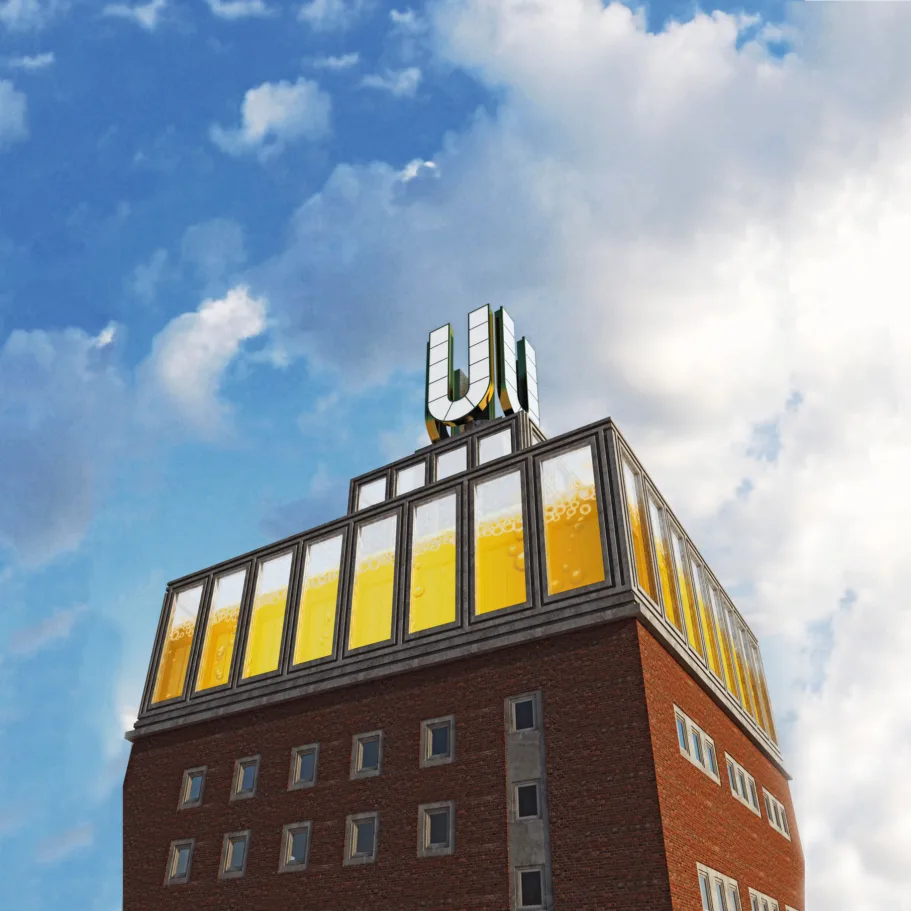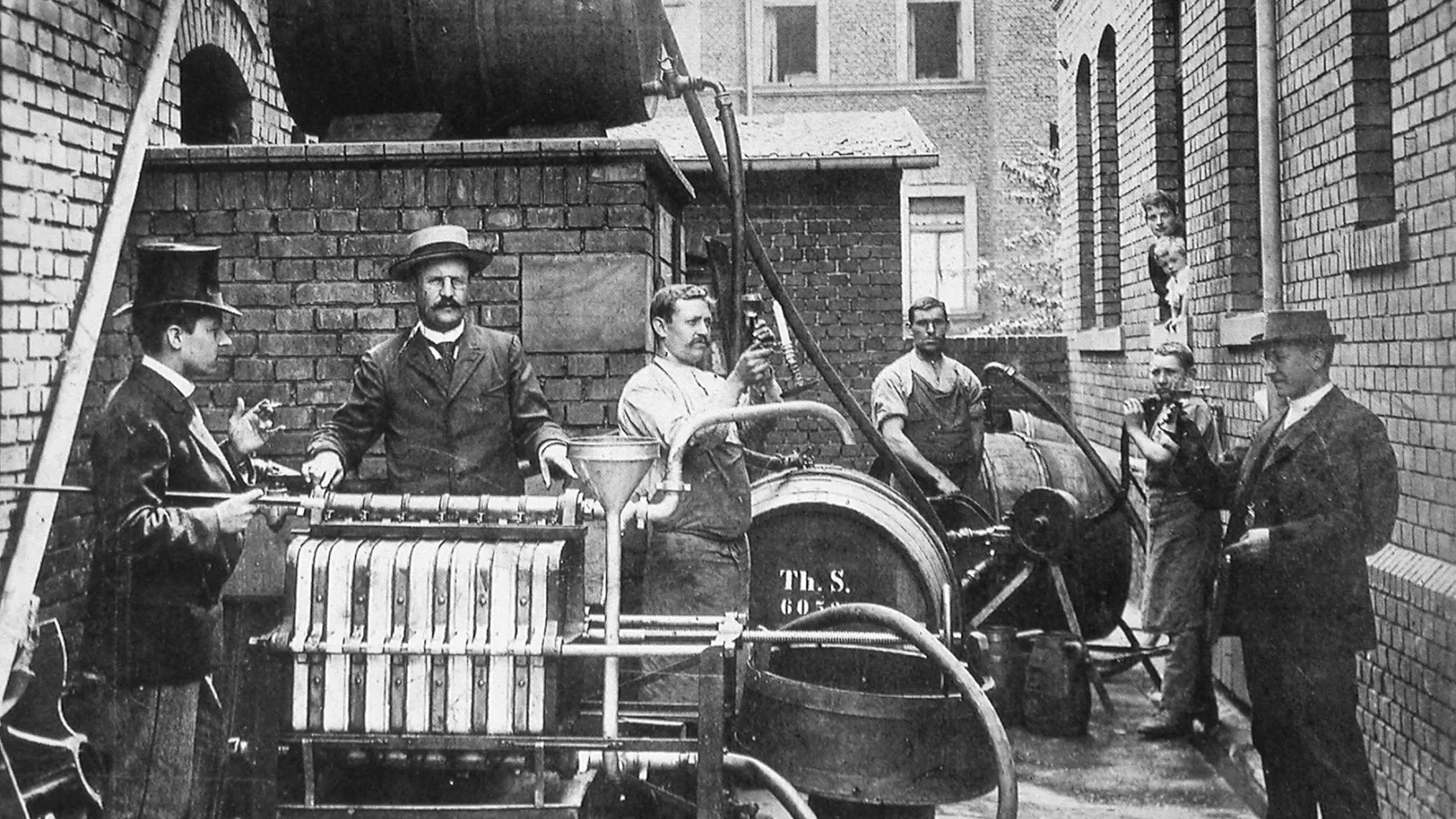
Wine comes clean
Just as the name Enzinger stood for clear beer, at the end of the 19th century the Seitz family from Bad Kreuznach was synonymous with “clean” wine. The most important means of achieving this was to use a filter medium which has now largely disappeared from the beverage industry: asbestos.
Theobald Friedrich Seitz was just 23 years of age when he fulfilled his wildest dreams and opened a wine commission business. He had already suffered his first defeat: all efforts to salvage the not-exactly-flourishing colonial merchandise trade inherited from his late father, who died young, had proved futile. Trading in wine was also not as simple as Theo Seitz had possibly thought. Time and again complaints were made about the wine being cloudy – it was often delivered to destinations overseas – although the vintages of the same batch stored in the winery cellar were still crystal clear. The cause of the problem was soon found: the bag filter which was at the time the only way of clarifying wine. The filter kept haze substances out of the beverage but formed the perfect breeding ground for all kinds of microorganisms. It goes without saying that Seitz’s ‘clean’ wine soon became contaminated, turning cloudy after just a short length of time.
Crystal clear
Seitz had to find his own solution to the problem. He experimented at length with various filter materials without having any great success until he tried asbestos; this he mixed with a cloudy wine and poured it into his test filter, a conical sieve made of wire mesh with a woven tulle lining. Finally, his experiment worked: the wine emerged crystal clear without having lost any of its color or bouquet. The Seitz brothers – Georg Heinrich, Theo’s junior by eight years, had now also joined the company – continued their research in an attempt to optimize the preparation of the fibrous asbestos. Decades later the precoating layers hurled in rage at the cellar walls during failed experiments were still visible, proving that success was long in coming.

Theobald Friedrich Seitz (1864–1929), merchant, inventor, manufacturer and for 14 years member of the Bad Kreuznach town council.
Successful premiere
The wine trade flourished but the Seitz brothers wanted more. In 1891 they began producing filter materials and constructing filtration equipment, for which parts were initially procured from a plumber’s workshop in Bad Kreuznach. They soon launched their first filters to market, earning much praise and recognition. In 1894 Julius Neßler, a leading German agricultural chemist and wine expert, recommended what he called Seitz’s “little device” for the filtration of small quantities of wine at the winemaking congress in Mainz – which was practically tantamount to being made a saint.
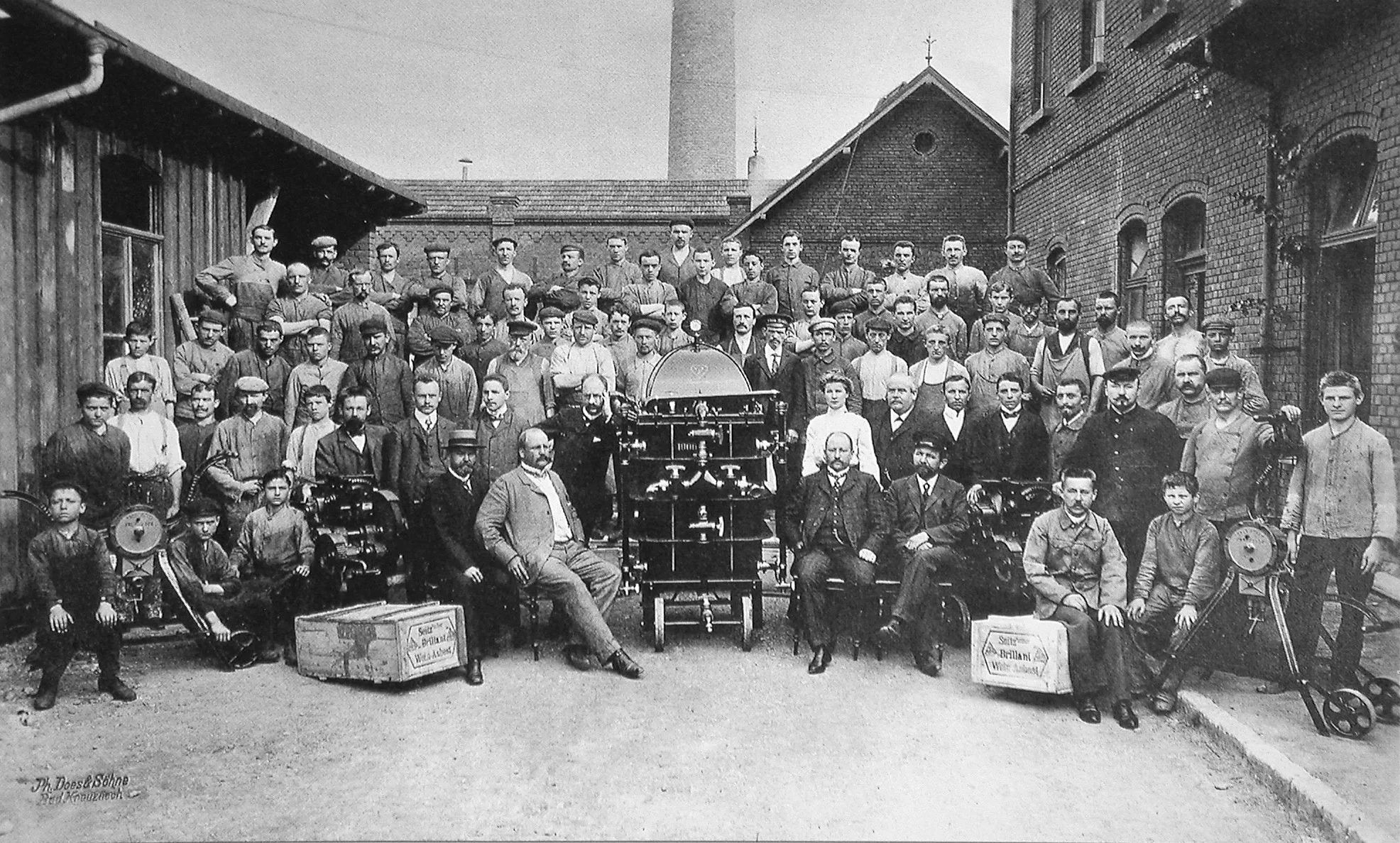
The company directors and workforce proudly present the thousandth asbestos filter for large companies.
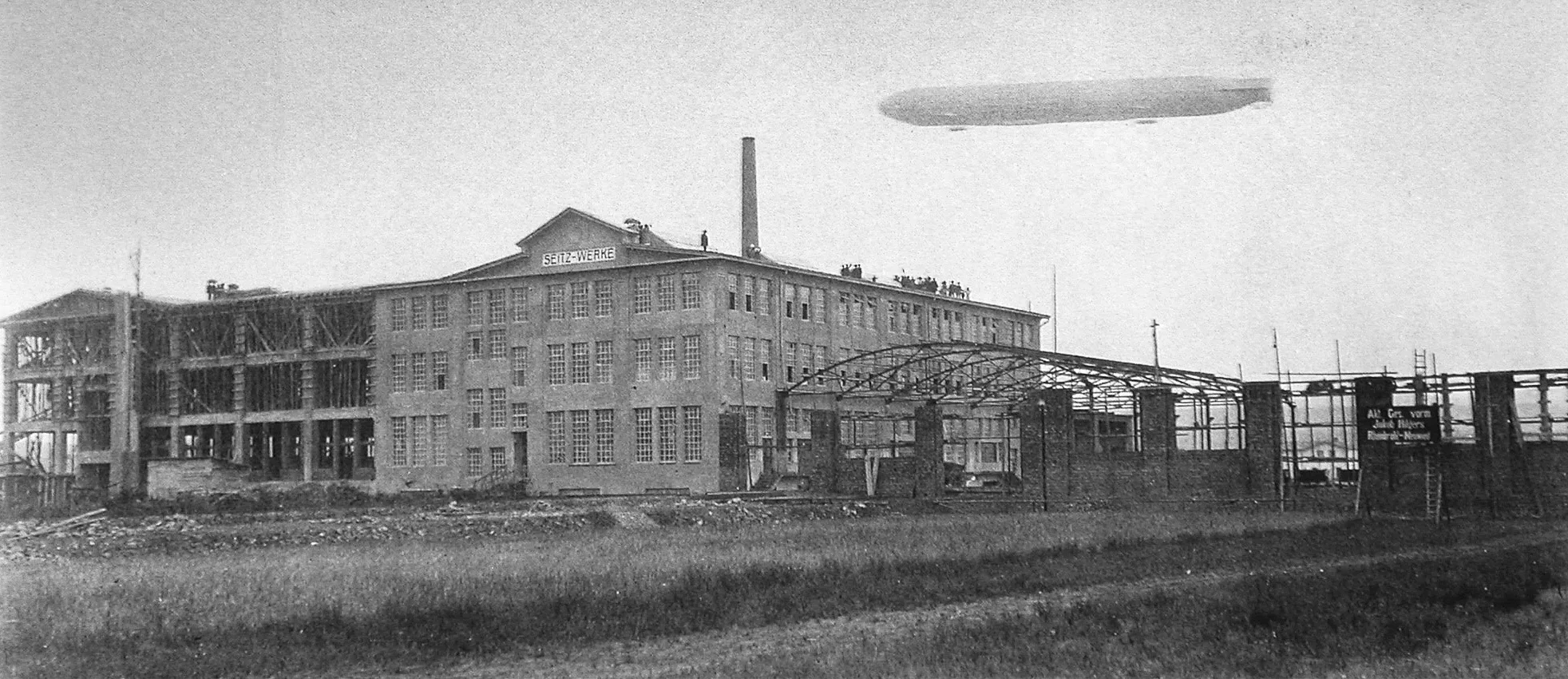
In 1911 a passing airship momentarily catches the attention of the builders working on the new Seitz-Werke.
„Asbestos powder is the best filtering material for wine and preferable to cellulose, cotton and paper pulp in every respect,” writes the “Deutsche Weinzeitung” in 1892.
The name Seitz was now a fixed feature in professional circles both within and outside Germany. In the space of just five years the company had sold 8,000 filters. An entire barrel of wine could now be filtered in a wine filter press equipped for precoat filtration with asbestos. In 1898 the company moved to larger premises. All of the equipment was now manufactured entirely by Seitz and the wine commission business was closed, with the affiliated winery continuing to operate for the purpose of experimentation. The workforce grew, reaching a total of 100 employees. In 1901 Seitz’s “giant filter” was launched which could process up to an impressive 60,000 liters of wine per day.
Wide range of products
Theo and Georg Seitz then started to diversify. Alongside the Komet bottle filler and filter materials with fine-sounding names such as Brillant Theorit, Komet Theorit or Crystall the young company began marketing an entire range of cellar equipment, ranging from whisks to digesting devices for the manufacture of essences, from various types of pump to the single-pull Ein-Ruck corkscrew which was effusively described in the catalog as being “extremely practical and highly recommendable! Simplest conceivable manner of operation.”
In view of the vast range of products on offer and a grand total of 40,000 customers worldwide, it’s hardly surprising to learn that space had become rather limited. In 1910 the Seitz brothers acquired a plot of land measuring 26 hectares, upon which by 1912 the representative building of the Seitz-Werke was erected – the name under which the company was now operating.
Miraculous fiber with a drawback
Asbestos refers to any naturally occurring, fibrous crystalized silicate minerals. For decades the material was heralded as a “miraculous fiber” for its great tensile strength, resistance to heat and acid and excellent insulation properties. It was used in shipyards, in the construction and automobile tire industries, for work safety textiles and in filtration, among other areas.
Unlike with the simple sieve effect, where the pores of a filter or the filter mass must be smaller than the average haze substance particles, filtration using asbestos works by adsorption: the substances or molecules which are to be filtered out remain on the surface of the asbestos fibers where they accumulate.
Besides being used in the beverage and pharmaceuticals industries asbestos filters were also applied worldwide in the chemicals, grease and oil sectors. At the beginning of the 1950s test engineer Karl Frank published the following information on asbestos: “no vintner or wine trader exists who does not now filter his wine using asbestos to lend it its clear appearance. Asbestos filters can produce as much clear wine in half a day as the cellulose filters used in the past could manage in an entire week.”
Despite its excellent properties, nowadays asbestos is no longer used in the beverage industry as a filter medium for health reasons. If the needle-shaped, microscopic asbestos particles enter the lungs through inhalation, they can cause what is known as asbestosis and the lung or diaphragm cancer associated with this. In the past it was not so much the beverage consumers who were at risk but the workers in asbestos mines and personnel at beverage plants where dust from filter sheets, for example, could constitute an acute hazard.
The use of asbestos has since been banned in many countries. Since the mid-1980s combinations of cellulose, diatomaceous earth, perlite and fibrous or powdery ancillary materials have been used in sterilizing filtration.
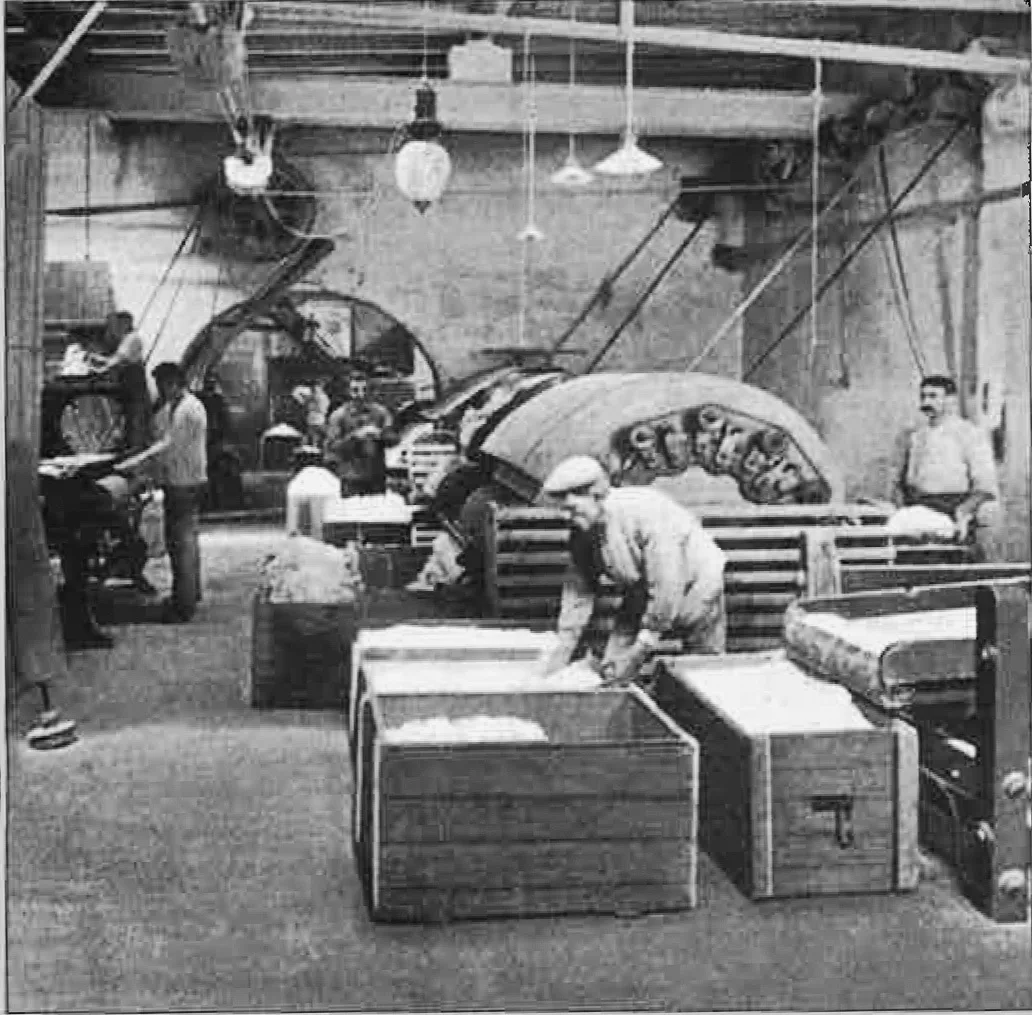
Seitz workers in c. 1910 preparing asbestos at the first Seitz factory on Bahnstrasse.
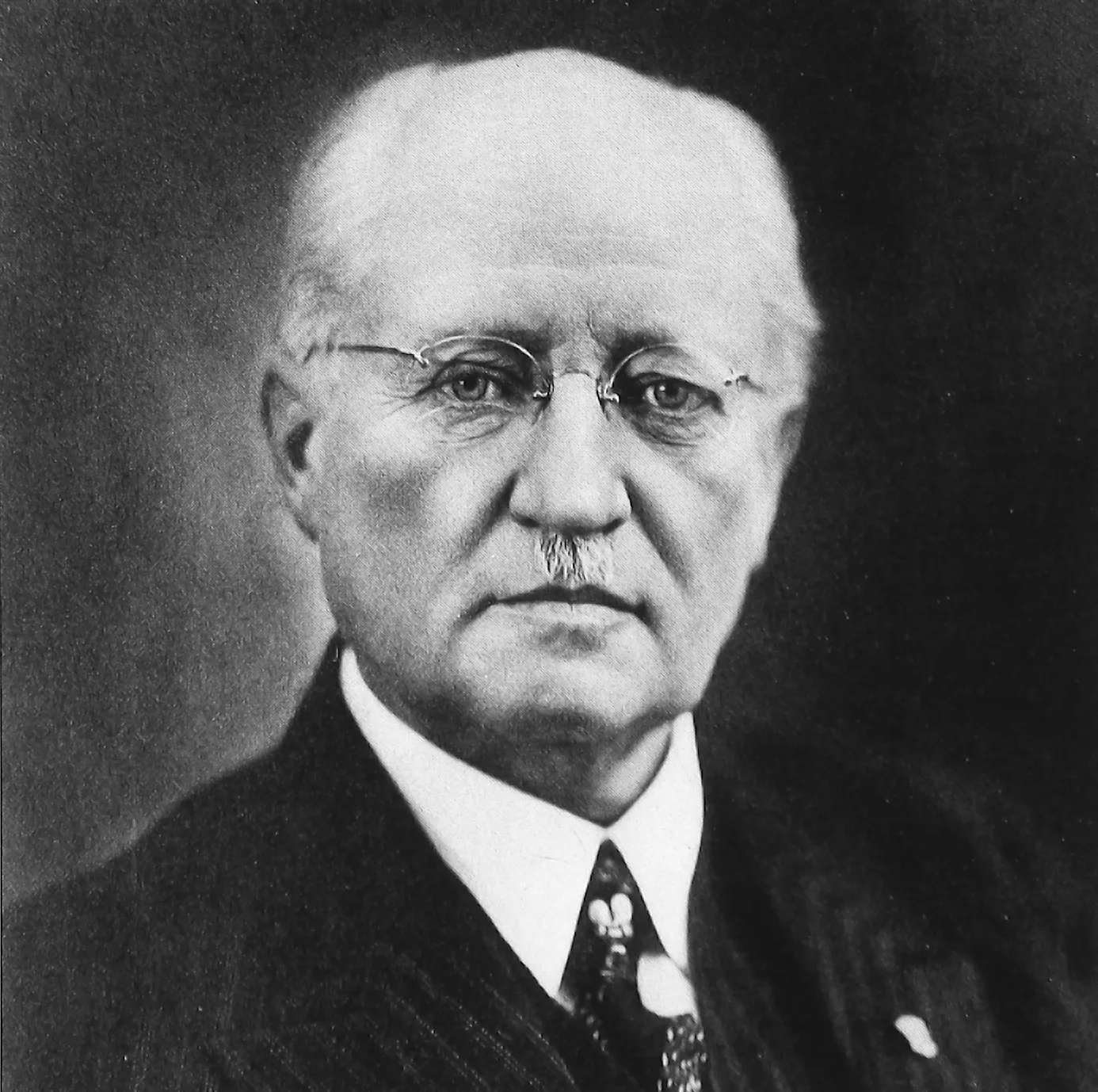
Georg Heinrich Seitz (1872–1938), congenial partner of and successor to his older brother Theo.
Scientifically sound
Theo and Georg Seitz still weren’t satisfied with what they had achieved thus far, however. Early on they had realized that not only must the quality of asbestos filtration be assured – and not just with respect to the raw materials – but that the process also had to be scientifically sound and optimized. Experiments performed by the renowned bacteriologist Professor Karl Krömer proved that, unlike the otherwise usual filtering methods which removed 80 to 90% of all germs, filtration using Brillant Theorit achieved a rate of 99%. This was a challenge to the Seitz brothers: they wanted to develop a filter which was so finely pored that with it liquids could be made 100% germ free and thus sterile.
The employment of a new member of staff proved to be a landmark in this respect: on April 1, 1913, one of Krömer’s students, Friedrich Schmitthenner, started work at the Seitz-Werke as head of the bacteriological laboratory – a positon he held until 1945. Within the space of just one year Schmitthenner managed to develop a filter sheet which not only filtered the wine but also produced a totally sterile filtrate. The experts immediately acknowledged this pioneering achievement, with the new filter laying the foundations for a new age of filtration technology. Without the heating process required during pasteurization, which often impaired the quality of the product, and without the addition of chemical preservatives, yeast, bacteria and pathogens could now be removed from all kinds of liquid and thus preserved. The way was paved for the cold sterile filling of wine, beer, fruit juices and pharmaceuticals.
Some time was to pass before the new sterilizing filter from Seitz spread to the rest of the globe. The First World War had broken out and most of the Seitz-Werke’s male employees were called up to the front. Schmittheller used the time to ready his sterilization sheets for serial production which to date had only been manufactured under laboratory conditions. A largely female workforce performed each step in the process by hand: from maceration of the raw materials through application of the filter mass to molded sieves, known as suction filters, to the placement of the damp layers in the drying ovens.
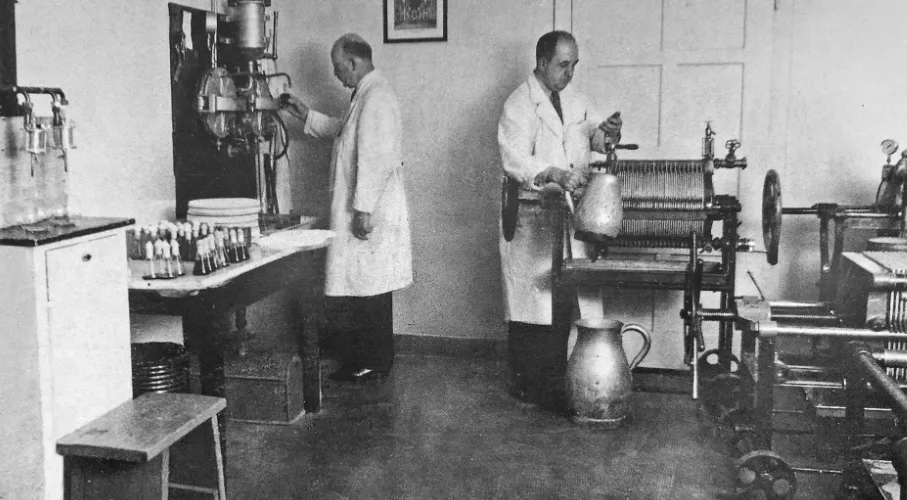
Head of the laboratory Friedrich Schmitthenner (left) and a member of his staff at the applied technical laboratory belonging to the Seitz-Werke.
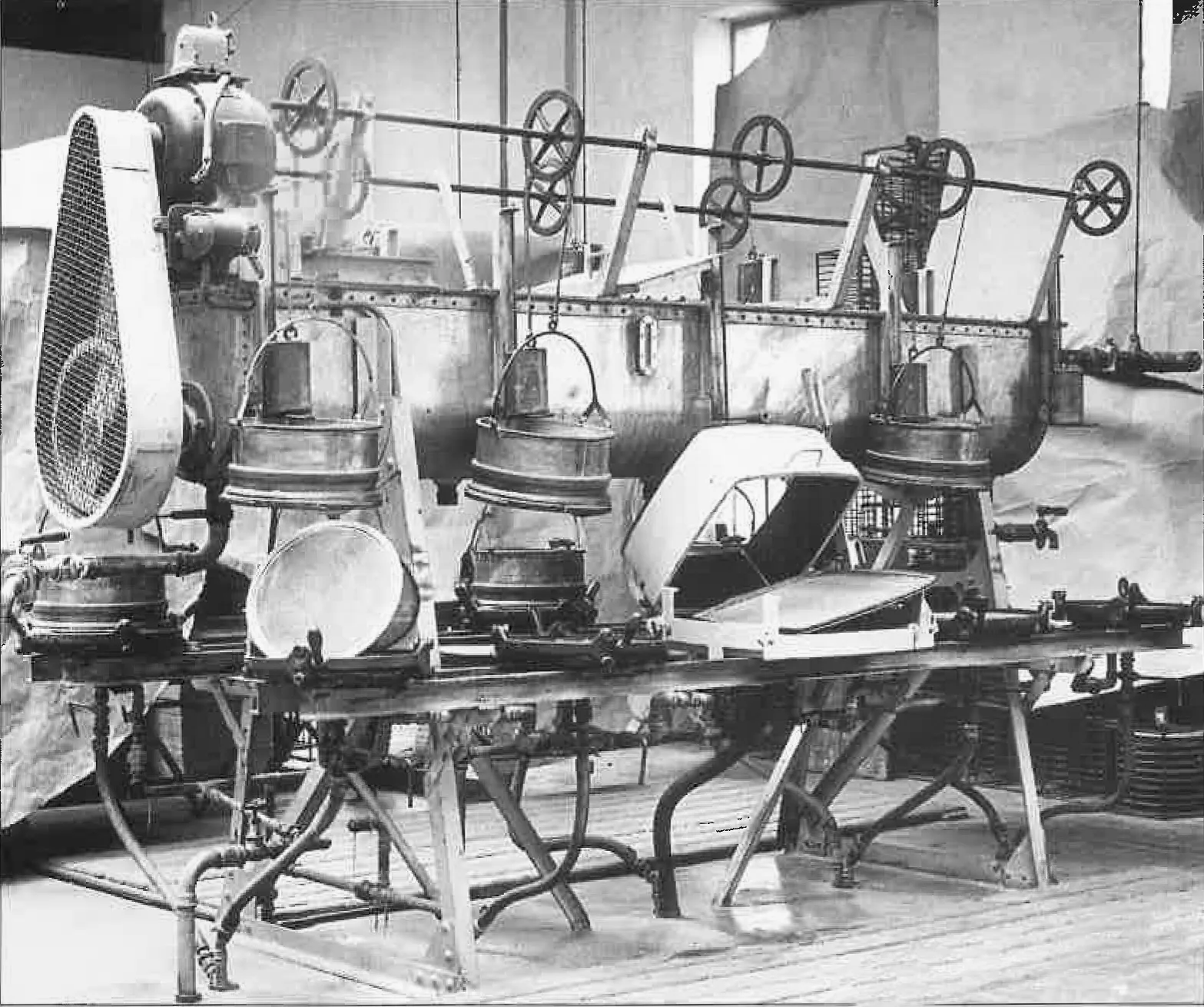
Until the 1920s filter sheets were made under manufacturing conditions using what are known as suction filters.
The successful use of the Seitz sterilizing filter in the First World War paved the way for its success in the winemaking business at the beginning of the 1920s.
Mobile sterilization
In 1916 Georg Seitz and Friedrich Schmitthenner presented their sterilizing filter in Berlin to the Armed Forces Test Center and the Office of Water Hygiene. When at first they were merely met by a disbelieving smile from the head official, Seitz filled a glass with water from the River Spree sterilized by Schmitthenner as a sample and drank it down in one go. Impressed by this spirited demonstration the head official himself examined the water under a microscope and sheepishly had to admit that the filter had indeed produced water which was free of all bacteria. The high command of the armed forces subsequently approved Seitz’s sterilizing filter for use among the troops. With great haste a knapsack version was then constructed in Bad Kreuznach which could be easily transported by soldiers and used to sterilize drinking water at the front. As a result the number of cases of cholera or typhus very quickly fell.
In c. 1918 the second generation of the Seitz family took over management of the company in Bad Kreuznach. The two founders remained loyal to the Seitz-Werke for many years to come, however: Theodor until his death in 1929 and Georg until he retired from the board of management one year after the company’s fiftieth anniversary had been celebrated in style in 1937. In the same year, 1938, Georg died. His funeral was well attended by the local populace.

